Since the white wedding dress as we know it today burst into the fashion world with Queen Victoria’s wedding dress in 1840, it’s gone through a lot of different styles and trends.
The 1900s was when the fashion of Queen Victoria’s wedding saw a full trickle-down effect to the everyday women. In the 1900s, the style focused on a full and modest shape, with an S-shaped corset complete with ruffled blouse and large sleeves. The waist line sat a little higher than the actual waist, and high- necked collars, as well as tapered wrist cuffs, were fashionable. Brides could expect to wear long gloves, veiled hats, and long trains. Bouquets were large and over the top, while the makeup was just the opposite—the 1900s bride’s goal was to appear as natural as possible.
The 1910s saw an introduction of a more flowing and less structured dress silhouette, phasing out the large sleeves and voluminous ruffles of the 1900s. Some historians speculate that the dresses became looser in the skirt to allow for dancing at receptions, as it became increasing popular in this decade. The dresses were high-waisted empire lines, with sleeves worn to the elbow. To make up for the loss of the ruffle ornamentation, brides often wore dresses with intricate lace designs. Cap-style veils were common in this era, as were smaller bouquets.
In the 1920s, brides began to see the first streamlined silhouettes. Thanks to “flapper” style, bridal dresses became straight silhouettes with a swing hem, lower scoop necklines, and lower waists that sat on the hip. This decade also saw a huge burst of popularity for embroidery and beading and a resurgence for overly-large bouquets. Brides of the ‘20s used headdresses rather than veils, and wore their dresses shorter (on or below their knees rather than to the floor). This decade also saw the introduction of the veil flowing into a train.
The 1930s brought with it the Great Depression, which made wedding dresses a luxury that many women simply couldn’t afford. Most of the wedding dresses available were produced in the cheaper rayon, rather than the more expensive silk. Brides often chose dress styles that they could simply dye a different color and wear again after the wedding. They wore hats rather than veils. Hemlines fell from the 1920s, but instead of returning to the floor they instead stopped at the ankle.
Wartime weddings became common in the 1940s, and they were rapid-fire affairs. According to a 1942 issue of Vogue: “The 1942 schedule may run something like this: engagement announcement on Monday, invitations sent out by telegraph on Wednesday, the last handful of rice and rose petals flung on Saturday.” (A little bit of a change from the sometimes years-long wedding process today!) Brides began to use DIY techniques for their dresses in the 40s, using curtains for veils, furniture upholstery for dresses, and paper flowers. Gowns of the 40s most often featured rounded shoulders, tight gathered sleeves with small shoulder puffs, a corset waist, and full padded hips.
Post-war, the 1950s was the first decade that truly allowed for a development of wedding fashion (helped along by Grace Kelly’s gorgeous royal wedding). Gloves came back onto the bridal scene, with fingerless bridal gloves and short gloves for the wedding party a must-have item for 50s brides. Shorter hemlines, reminiscent of the 20s and 30s, came back into play, along with a new emphasis on the bride’s shoes. The sweetheart neckline became immensely popular in the 50s, along with strapless gowns and coordinated bolero jackets. (Brides wanted to be respectful and cover their shoulders in the church, but be able to be free and flirty at their reception.) Lace tiers and frills for full-bodied skirts became popular. Bodices were fitted and cinched at the waist. Bird cage veils were all the rage. And bridesmaids didn’t find themselves left out in the cold—bridesmaids dresses became teacup or ballerina dresses.
Check back in with us next Friday to find more bridal styles from the 1960s to today. Which decade inspires your wedding fashion the most? Let us know!

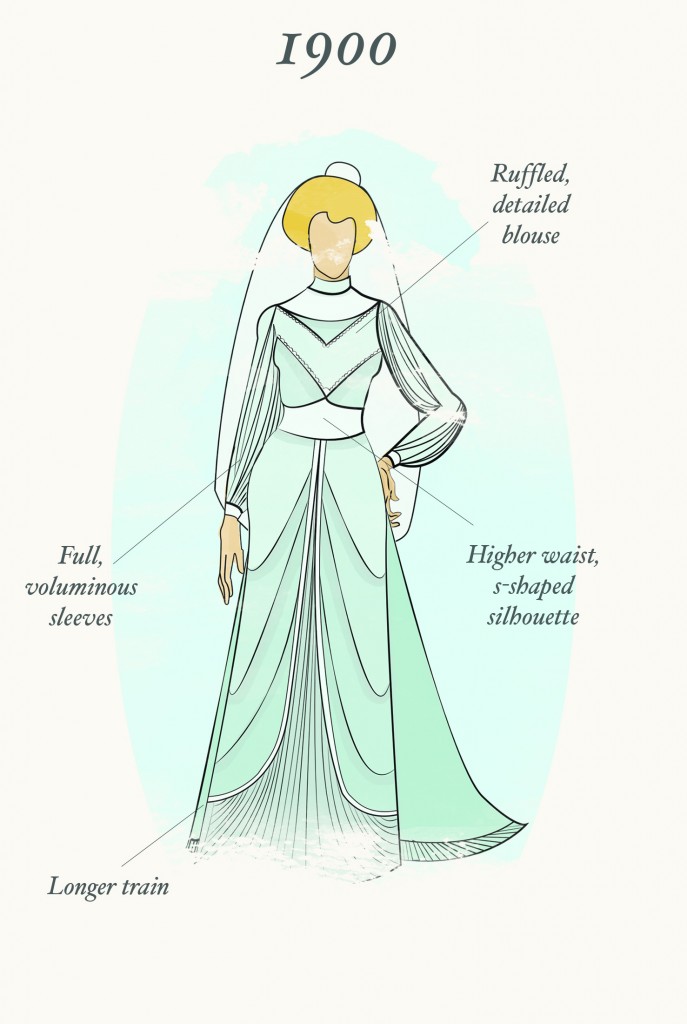
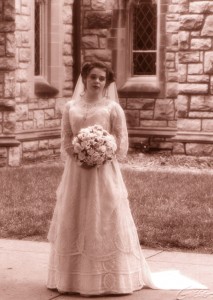
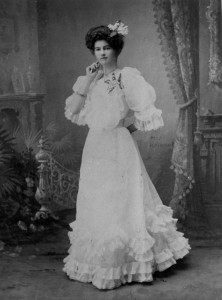
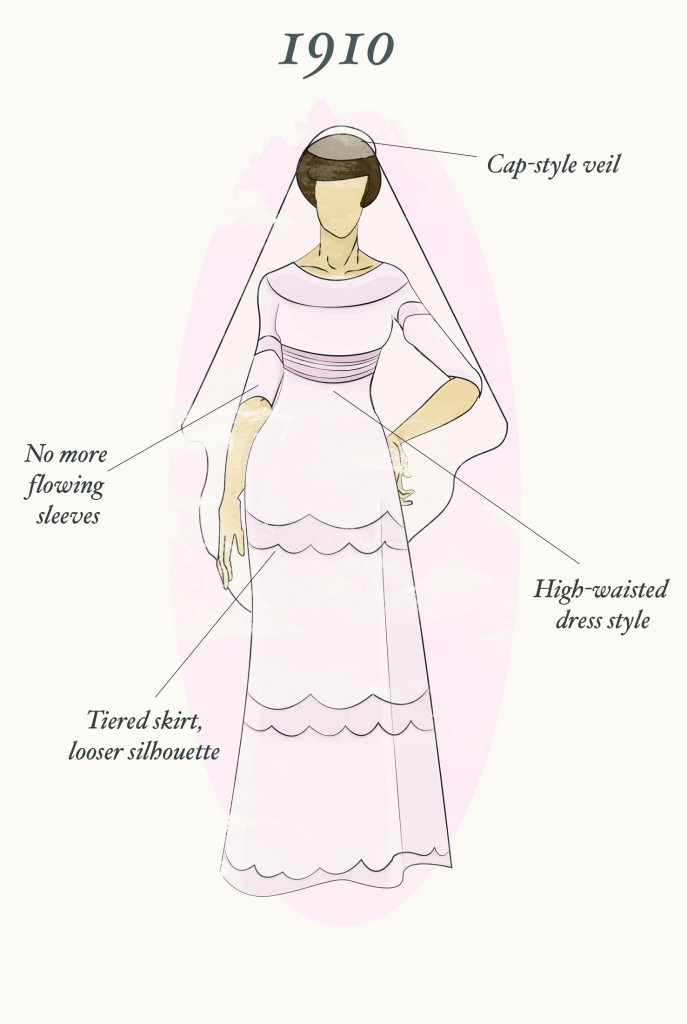
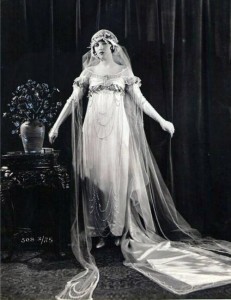
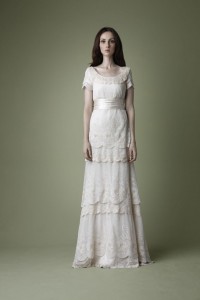
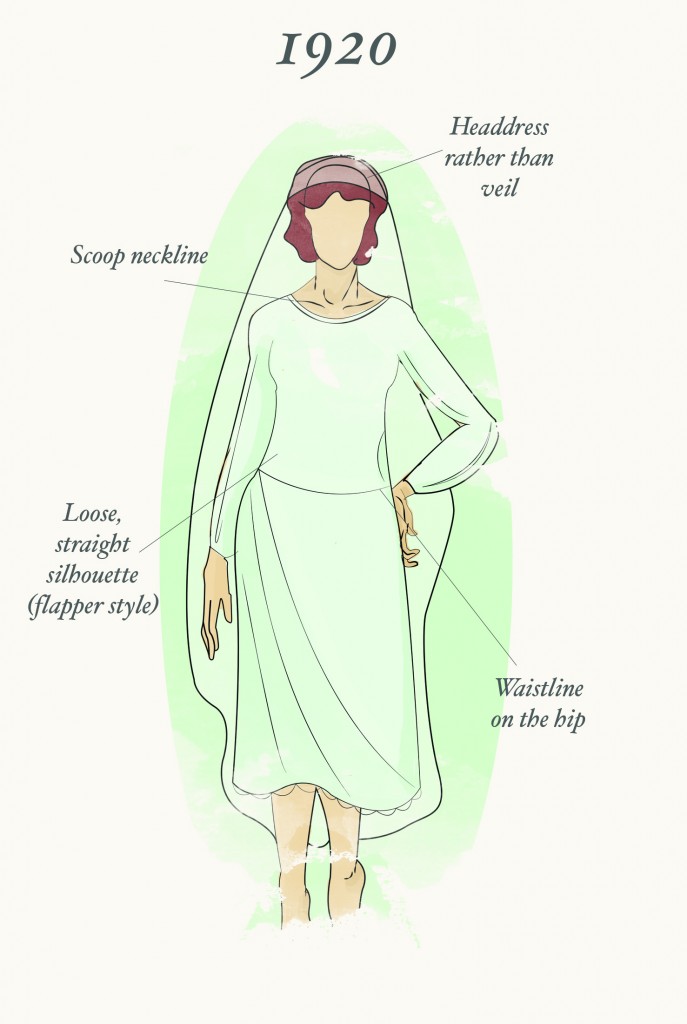
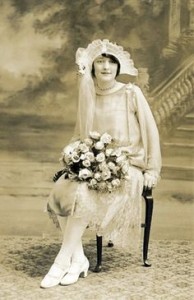
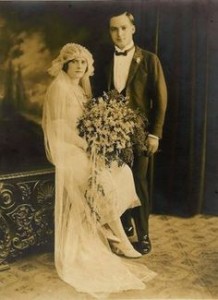
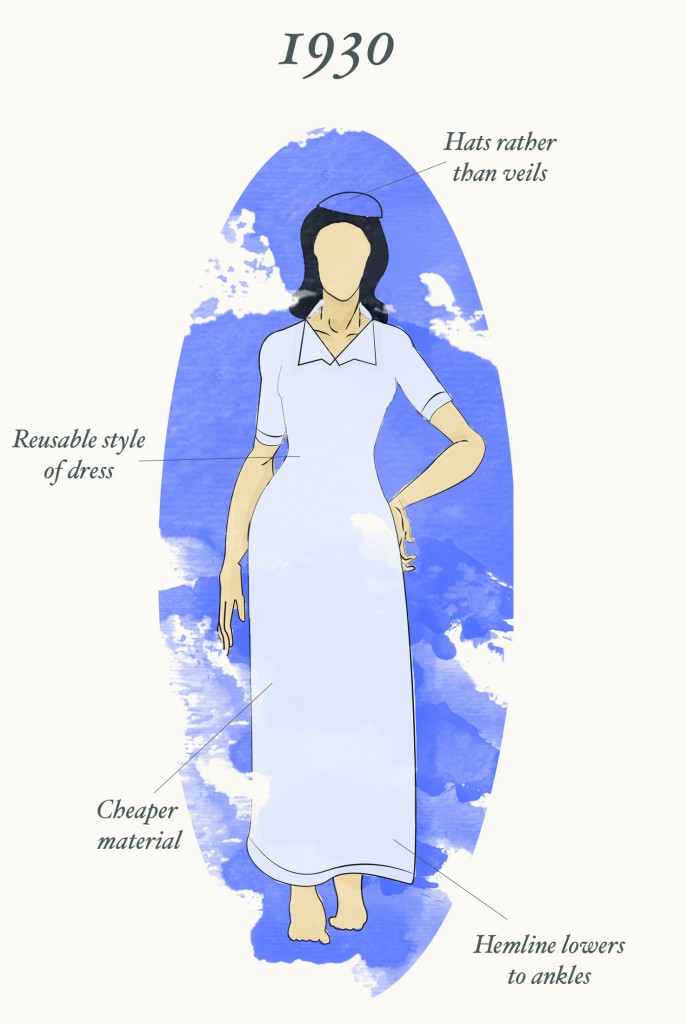
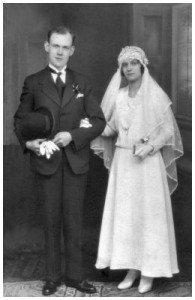
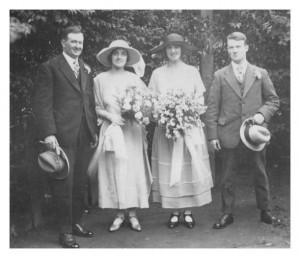
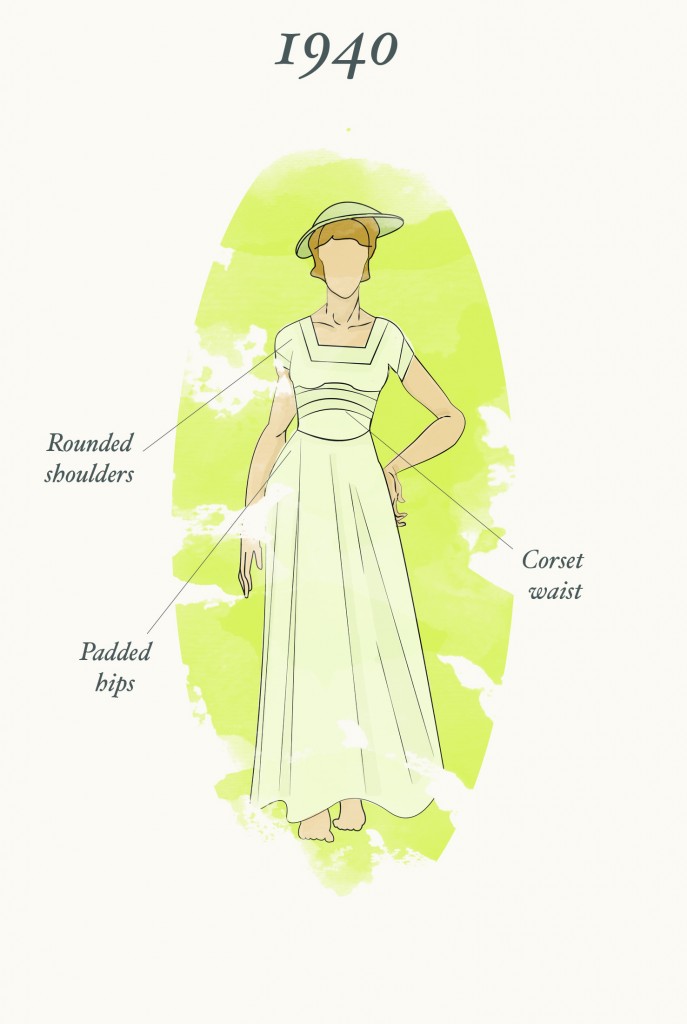
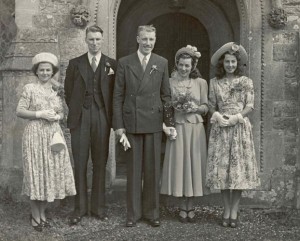
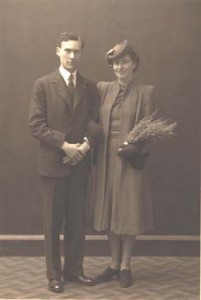
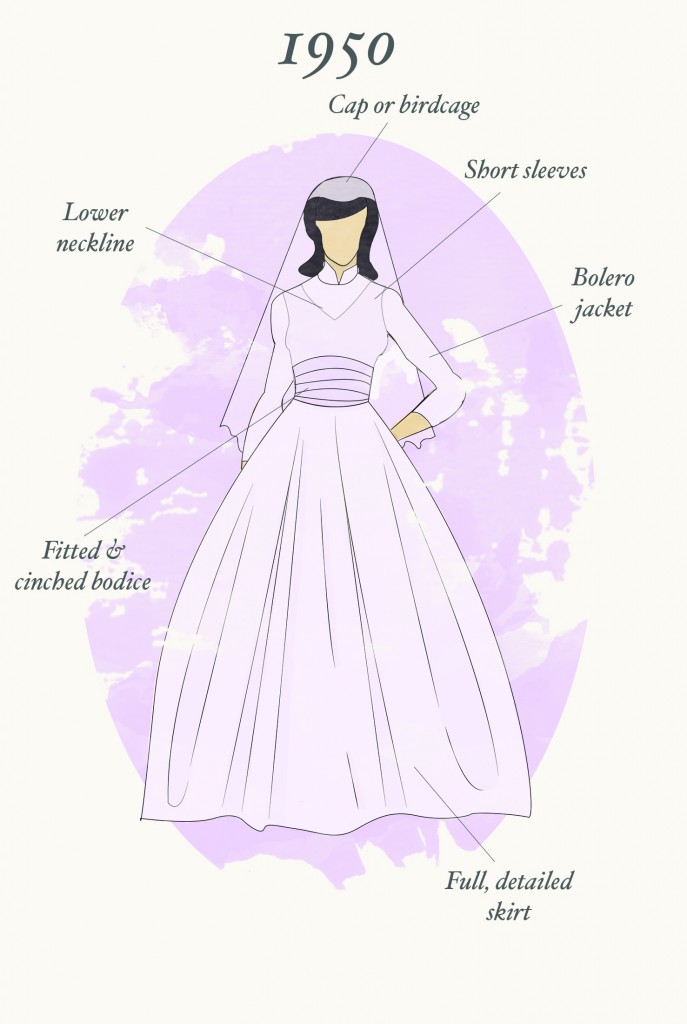
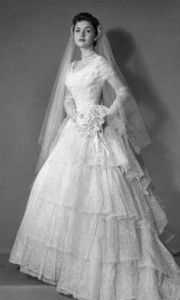
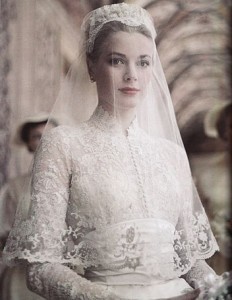
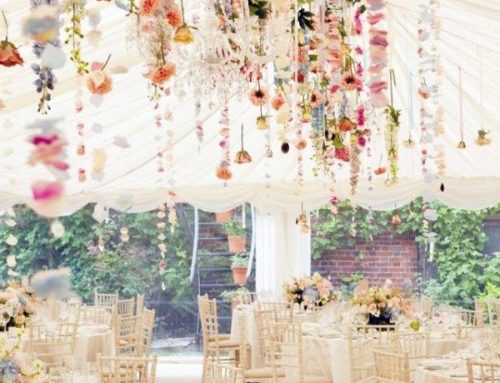
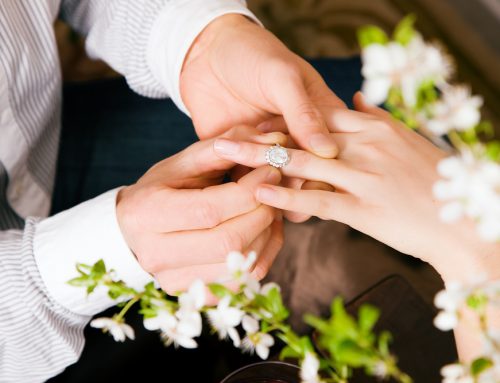
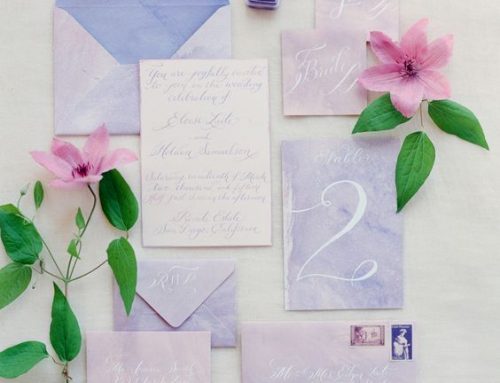




Let’s Get Social